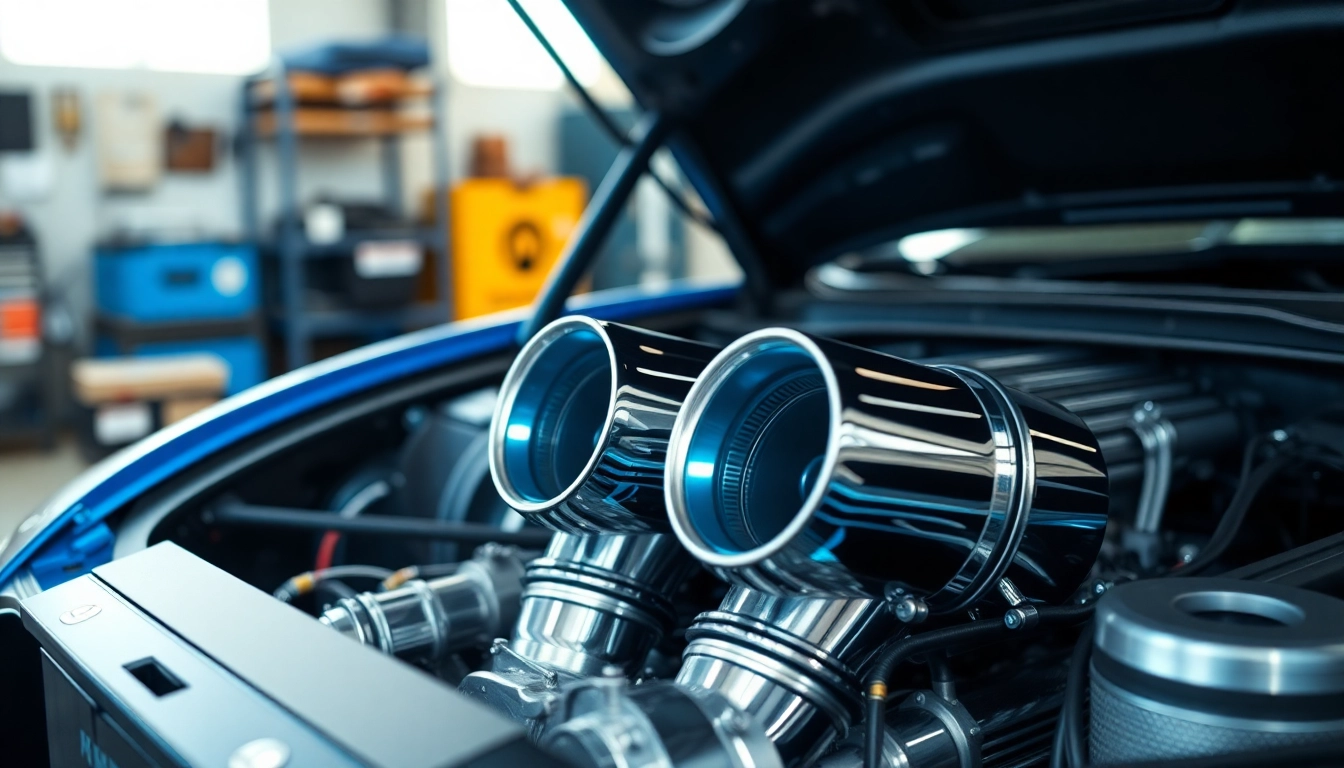Understanding Dual Intake Systems
Dual intake systems have garnered attention among automotive enthusiasts and professionals alike due to their potential to enhance engine efficiency and performance. But what exactly constitutes a dual intake? To understand this advanced technology, we must delve deep into its structure, benefits, and the practical aspects of implementation. This guide aims to provide a comprehensive overview of dual intake systems, offering insights that could help you make informed decisions in optimizing engine performance. Whether you’re a car lover, a DIY mechanic, or simply curious about automotive enhancements, the dual intake system stands at the forefront of engine advancement.
What is a Dual Intake?
A dual intake system refers to an arrangement that utilizes two separate air intake pathways to deliver air to the engine. Unlike traditional single intake systems that rely on a singular route for airflow, dual intakes create dual pathways that can optimize air delivery to enhance engine combustion efficiency. This approach not only increases airflow but also improves volumetric efficiency, allowing for better fuel and air mixture in combustion chambers. By managing air more effectively, these systems facilitate a more responsive throttle and overall improved performance.
Benefits of Dual Intake
The advantages of implementing a dual intake system can be extensive. Here are a few key benefits that make these systems desirable:
- Increased Airflow: Dual intakes facilitate improved airflow to the engine, enabling more air to enter the combustion chamber than traditional single setups.
- Enhanced Engine Performance: The added airflow contributes to a potential increase in horsepower and torque, which can lead to a more responsive driving experience.
- Improved Throttle Response: With enhanced air delivery, vehicles typically exhibit better throttle response, allowing for quicker acceleration.
- Efficiency Gains: Dual intakes help in maintaining optimal air-fuel ratios, improving overall fuel efficiency, especially during high-demand situations.
- Distinct Sound Quality: Many enthusiasts appreciate the unique sound characteristics offered by dual intake systems, particularly when under acceleration, providing an audible cue of performance enhancement.
Common Applications of Dual Intake
Dual intake systems are routinely utilized in various automotive applications. While primarily associated with performance vehicles, they are also becoming popular in mainstream vehicles as manufacturers seek to optimize efficiency and performance. Common applications include:
- Sports Cars: High-performance cars often come equipped with dual intake systems as standard, allowing for maximum engine output.
- Modified Vehicles: Car enthusiasts frequently install dual intake systems on modified vehicles as a means to enhance performance and personalize their builds.
- Off-Road Vehicles: Many off-road vehicles also utilize dual intake systems to ensure engines receive adequate airflow under various driving conditions.
- Motorcycles: Some motorcycle models incorporate dual intake systems for performance enhancements, allowing for increased power and responsiveness.
How Dual Intake Systems Work
Airflow Dynamics and Efficiency
The efficiency of a dual intake system is largely determined by the dynamics of airflow within the intake pathways. When air enters the dual intake system, it is split between two pathways before reaching the engine. This design minimizes restrictions and turbulence, allowing for smoother airflow. The use of larger diameter tubing in dual intakes can also facilitate a significant decrease in air density, further improving the volume of air drawn into the engine during operation. The arrangement allows for an effective utilization of the available atmospheric pressure, maximizing the engine’s potential intake capacity.
Comparison with Single Intake Systems
When compared to single intake systems, dual intake setups inherently offer several advantages:
- Increased Volume: Dual intakes can deliver a larger volume of air, as compared to single intakes which might experience back pressure or flow losses.
- Enhanced Balancing: The separation of airflow into two paths can lead to a more balanced air distribution in multi-cylindrical engines, improving performance.
- Redundancy and Reliability: If one pathway becomes obstructed, the second can still deliver air, providing a measure of reliability compared to a single intake system.
Impact on Engine Performance
Implementing a dual intake system can result in noticeable enhancements in engine performance metrics. Users often report gains in horsepower and torque, particularly at higher RPMs where air demand is crucial. Additionally, improved throttle response leads to a more enjoyable driving experience, as power becomes more accessible on-demand. As the engine breathes more freely with the dual intake design, overall engine longevity may also experience positive effects due to reduced stress on engine components during operation.
Installation and Maintenance of Dual Intake
Installation Process Overview
The installation process of a dual intake system can vary by vehicle make and model, but generally involves several key steps:
- Assessment: Determine if your vehicle is compatible with a dual intake upgrade.
- Preparation: Gather all required tools and components. This typically includes sockets, wrenches, and potentially new hoses or clamps.
- Removal of Existing Intake: Disconnect and remove the existing air intake system to provide access to your engine bay.
- Fitment: Position the dual intake components in place to ensure proper fit, checking for any spacing issues or obstructions.
- Connection: Connect the air intake tubes, ensuring airtight seals to prevent leaks.
- Final Checks: Before starting the engine, confirm that all connections are secure and that no tools are left in the engine bay.
Essential Tools for Installation
For a successful installation of a dual intake system, it’s essential to have the right tools available. Some commonly needed tools include:
- Socket and Wrench Sets
- Flathead and Phillips Screwdrivers
- Hose Clamps and Pliers
- Torque Wrench
- Rubber Grommets and Hoses (if necessary)
- Air Filter Cleaning Solutions (for filter maintenance)
Maintenance Tips for Optimal Performance
To ensure your dual intake system operates at peak efficiency, regular maintenance is pivotal. Here are several maintenance tips to keep in mind:
- Regular Filter Cleaning: Depending on your driving conditions, consider cleaning or replacing the air filter every 10,000-15,000 miles to keep airflow clean and unobstructed.
- Inspect for Leaks: Regularly check for any signs of air leaks in the intake tubes that could affect performance.
- Monitor Engine Performance: Pay attention to engine performance and any unusual noises which may indicate issues with your intake system.
- Check for Obstructions: Ensure that the intakes themselves are free from debris or obstructions that could hinder airflow.
Tuning and Adjusting Your Dual Intake
Choosing the Right Settings
To extract the maximum benefits from your dual intake system, tuning your engine management system is vital. You may need to adjust your engine’s air-fuel ratios, ignition timing, and other parameters to accommodate the increased airflow. Utilizing an aftermarket engine management system can simplify this process, as many come equipped with pre-set tuning options suitable for enhanced air intake setups.
Impact of Tuning on Performance
Effective tuning can lead to significant performance gains, ensuring that your engine operates at optimal levels in conjunction with the dual intake system. Proper tuning allows for improved power delivery, throttle response, and overall engine efficiency. Through dyno testing, users can verify the performance improvement and fine-tune their settings to achieve desired results.
Common Mistakes to Avoid
While upgrading to a dual intake system, it’s important to be aware of common pitfalls:
- Overlooking Compatibility: Ensure that the dual intake system is designed for your specific make and model.
- Inefficient Installation: Take time to install properly; an inadequate fit can lead to performance issues.
- Neglecting Tuning: Failing to adjust engine parameters after installation can lead to suboptimal benefits.
- Ignoring Maintenance: Proper care and routine checks are essential for maintaining performance.
Future Trends in Dual Intake Technology
Innovations in Design and Materials
As the automotive industry continues to advance, dual intake technology is also evolving. Innovations in materials, such as lightweight composites and improved aerodynamics, are becoming commonplace in dual intake designs. These advancements not only improve performance but also enhance durability and reduce weight. Moreover, several manufacturers are exploring modular designs, allowing users to customize their intake systems based on performance needs and driving conditions.
Environmental Considerations
With the rising emphasis on environmental consciousness, modern dual intake systems are witnessing designs that aim to optimize fuel efficiency and reduce emissions. An increased focus on eco-friendly materials and manufacturing practices is also emerging. Implementing a more efficient air-fuel mixture through optimized dual intake designs can contribute positively to lowering carbon footprints and managing resource consumption.
Performance Research and Development
Research into the performance impacts of dual intake systems is ongoing. Many automotive engineers are continuously studying airflow dynamics to better understand how different configurations affect engine efficiency. Enhanced performance testing technologies are also being used to measure gains accurately, leading to the development of improved intake systems tailored for specific vehicles. As the understanding of fluid dynamics in automotive engineering grows, so too will the effectiveness of dual intake designs.



